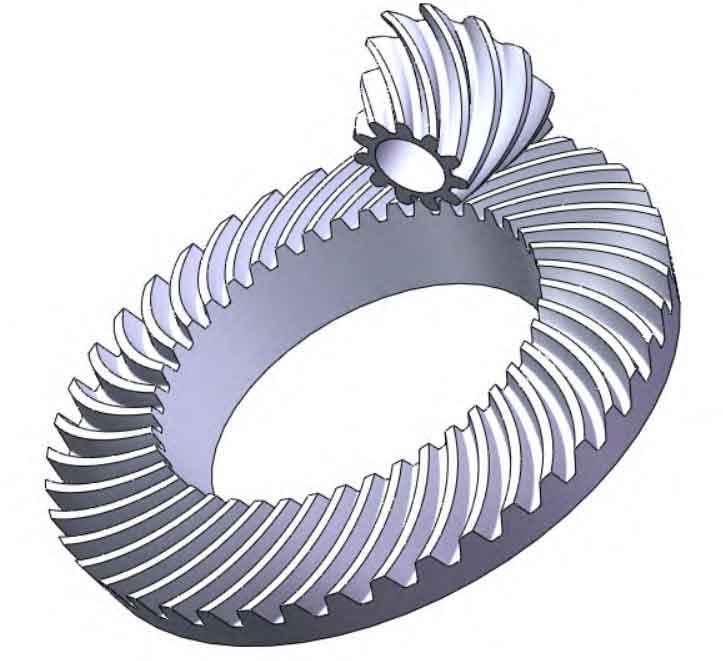Spiral bevel gears play a crucial role in many mechanical systems, facilitating power transmission between intersecting axes. The manufacturing of these gears requires precision and skill due to the complex geometry of their teeth, which are helical rather than straight. Various techniques have been developed and refined over time to effectively produce these components. This article will explore some of the primary manufacturing techniques for spiral bevel gears.

1.Gleason Method:
The Gleason method is one of the most common techniques for manufacturing spiral bevel gears. Named after the Gleason Works where it was developed, this method uses a specialized cutting machine with two cutting blades. The gear blank and the cutting blades rotate simultaneously to gradually form the gear teeth. The blades’ position and angle can be adjusted to control the shape and angle of the gear teeth. The Gleason method is widely used due to its ability to produce high-quality gears with precise tooth profiles.
2.Klingelnberg Method:
The Klingelnberg method, named after the Klingelnberg Company, uses a different approach to gear cutting. This method employs a machine with a single large cutting blade that moves in a cycloidal motion across the gear blank. The gear blank also moves in a cycloidal motion, which enables the cutting blade to form the curved teeth of the spiral bevel gear. The Klingelnberg method is particularly suitable for producing gears with large modules or high tooth counts.
3. 5-Axis CNC Machining:
5-axis CNC (Computer Numerical Control) machining is a modern method for manufacturing spiral bevel gears. In this method, a computer controls the cutting tool’s movement along five different axes simultaneously. This allows the machine to cut complex shapes and curves, making it ideal for producing spiral bevel gears. 5-axis CNC machining can produce highly precise gears in a shorter time compared to traditional methods.
4.Gear Grinding:
Gear grinding is a finishing process used after the initial cutting process. This method refines the tooth surface to improve the gear’s performance and longevity. Gear grinding can be done using a variety of techniques, such as form grinding (using a formed grinding wheel) or generating grinding (using a worm wheel). This process is important for producing high-precision spiral bevel gears used in applications where noise reduction and high speed are required, such as in automotive and aerospace industries.
5. 3D Printing:
While still in its nascent stage for gear manufacturing, 3D printing, or additive manufacturing, shows potential in producing spiral bevel gears. This process builds the gear layer by layer from a digital model, allowing for high precision and complex geometries. Currently, this method is primarily used for prototyping or for producing small batches of custom gears. As 3D printing technology continues to advance, its role in gear manufacturing is expected to grow.
Manufacturing spiral bevel gears requires a combination of precision, skill, and advanced machinery. From traditional methods like the Gleason and Klingelnberg techniques to modern processes like 5-axis CNC machining and 3D printing, a variety of techniques are employed to produce these vital mechanical components. As technology continues to evolve, so too will the techniques for manufacturing spiral bevel gears, leading to even greater efficiency and precision in their production.
